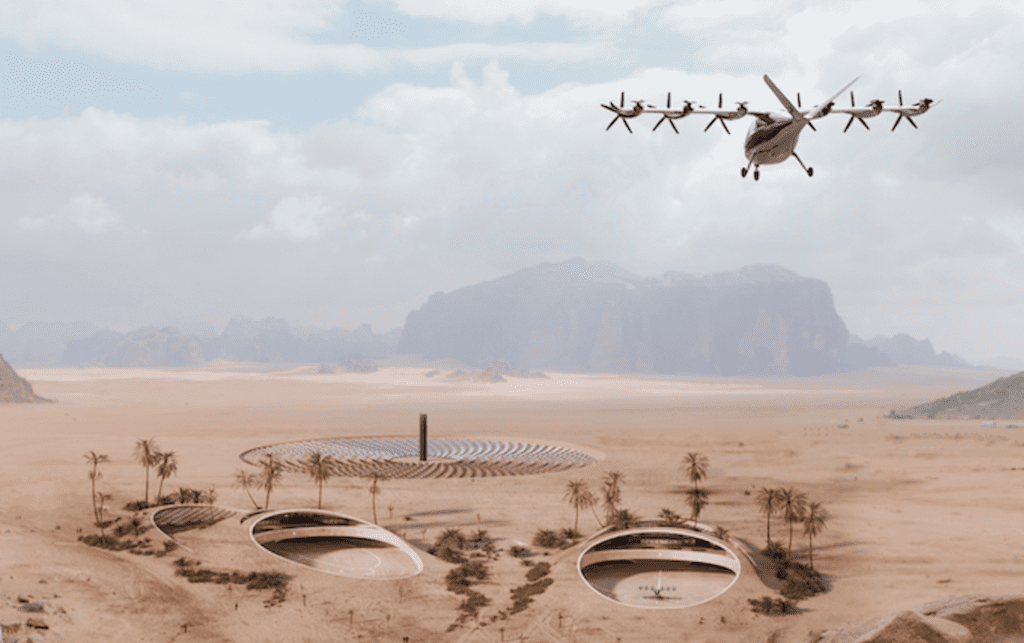
The Federal Aviation Administration confirmed this week that it is changing its regulatory approach for certifying operation of powered-lift aircraft as well as changing the certification requirements for the pilots operating these types of vehicles. (Photo courtesy of Archer Aviation)
In a statement to Avionics International this week, the Federal Aviation Administration confirmed that it will be modifying its regulatory approach for certification of powered-lift operations and the pilots that operate these aircraft. In the short-term, the FAA plans to use its “special class” process in 14 CFR 21.17(b) to type certificate powered-lift aircraft, in order to address the unique features of emerging powered-lift models.
This type certification will use the performance-based airworthiness standards found in Part 23 of the FAA regulations. The Part 23 rule was revised in 2016, going into effect in 2017, to update airworthiness standards for small airplanes; the agency had stated its intent to use the new Part 23 for “unique airplanes” based on their view that the former Part 23 did not account for airplanes with new technology, such as electric propulsion systems. In the 2017 update to Part 23, the FAA also decided that it did not intend to continue using 21.17(b) for unique category airplanes.
Now, more than five years after the 2017 rewrite, the FAA has elected to use 21.17(b) for the growing category of powered-lift vehicles. “The change is part of the agency’s efforts to safely and efficiently integrate new types of aircraft into the nation’s aerospace system, while providing a simpler pathway for applicants to obtain the necessary FAA approvals,” according to the statement from the agency.
Existing FAA regulations were designed with traditional airplanes and helicopters in mind. “These regulations did not anticipate the need to train pilots to operate powered-lift, which take off in helicopter mode, transition into airplane mode for flying, and then transition back to helicopter mode for landing,” explained the FAA representative. According to the agency, its main priority is to ensure the safety of those operating aircraft.
This, of course, includes verifying the safety of new electric vertical take-off and landing (eVTOL) aircraft. The changes to the regulatory approach involve accommodations for eVTOL pilot training and certification, which the FAA believes will provide an improved, and more predictable, framework.
“Our process for certifying the aircraft themselves remains unchanged,” the FAA stated. “All of the development work done by current applicants remains valid and the changes in our regulatory approach should not delay their projects.”
The agency’s long-term plan is continuous development of its regulations for powered-lift as new eVTOL designs emerge. “As this segment of the industry continues to grow, we look forward to certifying innovative new technologies that meet the safety standards that the public expects and deserves,” according to the FAA’s statement. “Rulemaking will eventually be required to comprehensively include powered-lift in the FAA’s regulatory framework.”
In response to the FAA’s decision, Mike Hirschberg, executive director of the nonprofit Vertical Flight Society, said, “The eVTOL industry is continuing to consult with the FAA, and is looking forward to refining the best path forward for certificating eVTOL—as well as electric short- and conventional-takeoff and landing (eSTOL/eCTOL)—aircraft.”
“International recognition of airworthiness for eVTOL aircraft is also a major consideration for US manufacturers,” he added, “to facilitate sales and operations of FAA-certificated aircraft in other countries.”
We reached out to some of the U.S. companies in the advanced air mobility industry last week for their perspective on these potential changes. “Honeywell welcomes any efforts to standardize and harmonize UAM certification standards,” commented Jia Xu, CTO and Senior Director of Engineering, Unmanned Aerial Systems/Urban Air Mobility at Honeywell Aerospace. “The industry needs clarity and consistency to achieve safe operations at scale.”
A representative from Archer Aviation commented that they “currently do not anticipate the latest planned changes having any material impact on our certification timelines. We welcome the efforts of the FAA to provide a framework around the design and manufacture of an aircraft that is safe and approved for commercial use.”
Some eVTOL aircraft will be unaffected by any changes in regulatory approach for powered-lift vehicles. Jaunt Air Mobility is pursuing certification under Part 27/29 rotorcraft rules as a company developing a traditional rotorcraft, with a single main rotor lifting device. “The CFRs are very specific about the training requirements for commercial-powered lift pilots. They are different than airplane and helicopter requirements,” stated Jesse Crispino, COO at Jaunt.
During the company’s first-quarter earnings conference call, Joby Aviation CEO and founder JoeBen Bevirt remarked: “Joby has a 10-year history of working with the FAA under leadership from both sides of the aisle, and under the guidance of a number of different FAA administrators. We share their vision for reaching the next level of safety and efficiency, and we support them in their goal of demonstrating global leadership in how new customers and technologies can be safely integrated into the aviation system.”